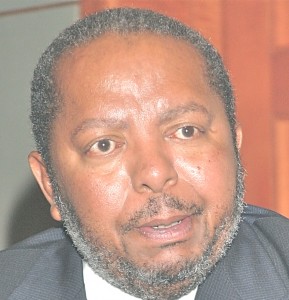Bank of Uganda drops rate by half percentage to 9pc
February 13—Not unexpectedly in light of falling inflation levels and hesitant borrowers, the Bank of Uganda (BoU) has reduced the Central Bank Rate (CBR) by half a percentage point to 9% from the previous 9.5% in December, but that was left unchanged from October.
“The growth of private sector credit remains below historic levels and the cost of credit remains relatively high for micro and small loans while the cost for corporates has declined,” Prof. Emmanuel Tumusiime Mutebile, BoU Governor said while presenting the latest monetary policy statement in Kampala.
He said the Central Bank aims to ease the CBR to enable commercial banks to extend more credit/loans to the private sector so that is can ignite growth. The rediscount rate and the bank rate have also been reduced to 13% and 14% respectively.
The reduction in CBR is expected to boost private sector credit growth and to strengthen the economic growth momentum. A continued fall in the Core Inflation figure, (one of the barometers the BoU uses to determine the CBR), has also helped. Commercial banks then use the CBR to post their own Prime Lending Rates (PLR) which have been sliding so fast since mid-2017, many financial institutions now prefer to no longer publicise them in the print media because it is getting hard to keep up. At 17.5% Stanbic Bank has been offering the lowest PLR.
According to latest figures from the Uganda Bureau of Statistics (UBOS), Uganda’s Annual Headline Inflation for January 2018 dropped to 3% from the 3.3% registered in December last year while Core Inflation fell to 2.6% from 3%.
Other factors that contributed to the CBR cut include a rebound in foreign direct investment (FDI) which grew by 18.5% in 2017 compared to a decline of 30.5% in 2016. Credit extension grew by 10.8% in Dec 2017 compared to 7.9% in Dec 2016 and import of raw materials and capital goods was up by 17.4% compared to a decline of 21.1% in 2016.
“These developments, coupled with the improving global economic outlook, could strengthen domestic economic activity. Economic growth for the financial year 2017/2018 is now projected in the range of 5% to 5.5%, a positive payoff for the current stimulatory monitory policy,” Mutebile said.


 African Heads of state head to South Korea next week for Summit talks
African Heads of state head to South Korea next week for Summit talks
 Trading leads as main source of income for Ugandans
Trading leads as main source of income for Ugandans
 New leadership for bankers’ umbrella as total assets top $12 billion
New leadership for bankers’ umbrella as total assets top $12 billion
 Brussels Airlines to announce Nairobi service
Brussels Airlines to announce Nairobi service
 SITA promises enhanced travel experience after Materna acquisition
SITA promises enhanced travel experience after Materna acquisition
 Saudia’s 105 aircraft order stretches A320neo lead over rival Max
Saudia’s 105 aircraft order stretches A320neo lead over rival Max
